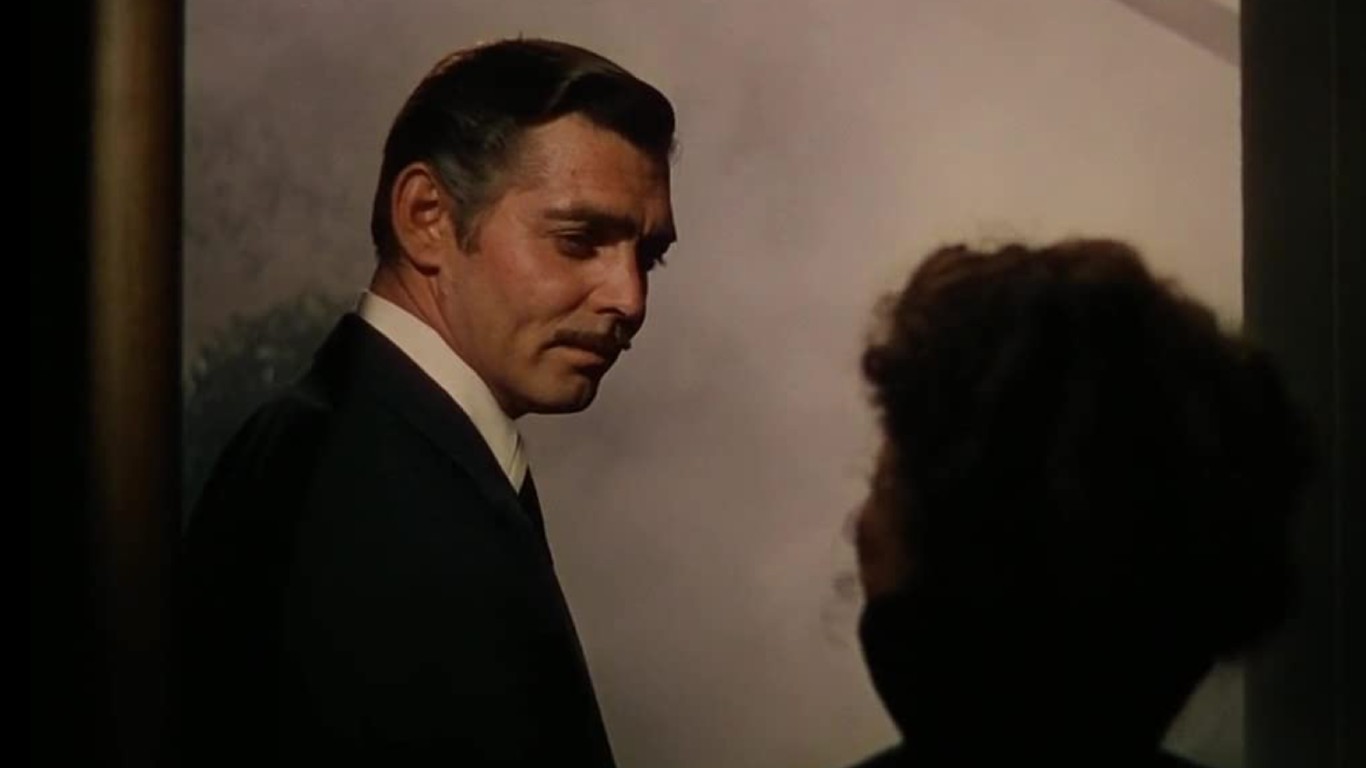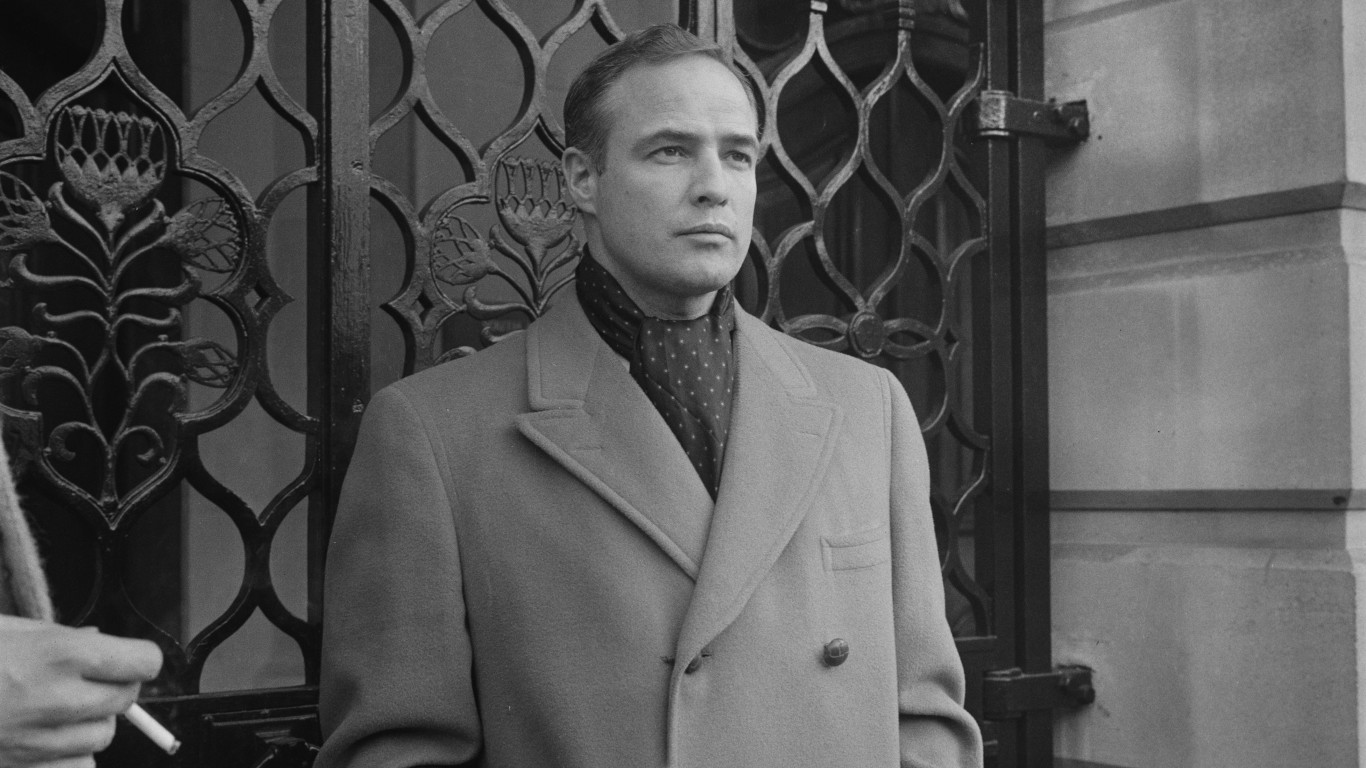Born in London, Charlie Chaplin (1889-1977) went on to become the greatest – and wealthiest – silent film star of his generation. Today, several of his movies, including “Modern Times,” “City Lights,” and “The Kid” are considered cinema classics. (All three have been ranked among the 55 best movies ever made.)
Chaplin was born into a showbiz family, but his father was an alcoholic and his mother had a mental breakdown, leaving him and his brother in the care of residential schools and workhouses. In 1897 he joined the Eight Lancashire Lads, a clog-dancing act. Eventually, he made his way to the U.S., where he got his start in Mack Sennett comedies.
It was in those films that Chaplin created the role he would become famous for: the Little Tramp. With his signature tight jacket, bowler, baggy pants, and cane, the Tramp starred in many of Chaplin’s movies. Audiences in the early 20th century loved the character’s plucky optimism and seeming ability to overcome the odds.
To determine Charlie Chaplin’s best movies, 24/7 Tempo created an index based on ratings from IMDb, an online movie and TV database owned by Amazon, and Tomatormeter and Audience scores from Rotten Tomatoes, an online movie and TV review aggregator, for all 11 of the feature films he directed over his 53-year cinematic career (all but two of which he also starred in).
Click here to see Charlie Chaplin’s best and worst movies as a director
In 1919, Chaplin along with Douglas Fairbanks, Mary Pickford, and D.W. Griffith founded United Artists. Three of his most famous and praised works – “A Woman in Paris,” “The Gold Rush,” and “The Circus” – were released under that studio. (Here’s a look at what life was like in the Roaring Twenties.)
Chaplin in some aspects was ahead of his time. He ventured into political commentary in “The “Great Dictator,” which pokes fun at Hitler and other dictators of the 1940s. The movie ends with Chaplin’s searing monologue supporting democracy and imploring people to love one another, words that resonate even today. “Modern Times” is his satire of industrialization.
For all his success, Chaplin’s life was not without controversy, however. His marriages to and bitter divorces from women much younger than him brought rebukes from conservatives. In 1952, he was blocked from re-entering the U.S. by opponents of his politics and moved to Switzerland. Chaplin’s only color film, “The Countess from Hong Kong” (1967), was a box-office bust.
In 1972, however, Chaplin returned to the U.S. to receive an honorary Oscar. Three years later, he was knighted by Queen Elizabeth II. In 1977, Chaplin died, leaving behind a rich cinematic legacy and an incalculable influence on film comedy to come.

11. A Countess from Hong Kong (1967)
> IMDb user rating: 6.0/10
> Rotten Tomatoes audience score: 42/100
> Rotten Tomatoes Tomatometer score: 43/100
The star power of Marlon Brando and Sophia Loren didn’t help the critical reception that greeted this romantic comedy on shipboard, the last film that Chaplin wrote, produced, directed, and scored. (He appears only briefly, as an elderly ship’s steward – the last time he was to be seen on screen.) Critics and audiences alike found it bland and repetitious – though famed French director François Truffaut reportedly considered it among Chaplin’s best.
[in-text-ad]

10. A King in New York (1957)
> IMDb user rating: 7.0/10
> Rotten Tomatoes audience score: 73/100
> Rotten Tomatoes Tomatometer score: 75/100
In the Red Scare atmosphere of the late 1940s and early ’50s, Chaplin – who held progressive political views – was accused of being a communist (which he denied), and in 1952 he was refused re-entry into the U.S. after premiering “Limelight” (see below) in London. He made “A King in New York” in Europe as a satire on McCarthyism in America and a criticism of certain aspects of American culture. It wasn’t seen in the U.S. until 15 years after its debut.

9. A Woman of Paris: A Drama of Fate (1923)
> IMDb user rating: 7.0/10
> Rotten Tomatoes audience score: 75/100
> Rotten Tomatoes Tomatometer score: 92/100
Chaplin wrote, directed, and produced this film about two star-crossed lovers, but appears in it only in a cameo as a railway porter. Set in France, the film begins as the two lovers, Marie and Jean, plan to leave for Paris and marry. When Jean’s father dies, he misses the train and Marie goes on to Paris alone. There, she becomes the mistress of a rich man. Jean and Marie meet up again in Paris, but their reunion ends tragically when Jean kills himself.

8. Monsieur Verdoux (1947)
> IMDb user rating: 7.9/10
> Rotten Tomatoes audience score: 88/100
> Rotten Tomatoes Tomatometer score: 97/100
Monsieur Verdoux (Chaplin) is a laid-off bank teller who turns to murdering and stealing the money of rich widows. The black comedy ends with Verdoux being led to the gallows as he says the murders he committed were nothing compared to the deaths of so many during World War II. Chaplin directed.
[in-text-ad-2]

7. Limelight (1952)
> IMDb user rating: 8.1/10
> Rotten Tomatoes audience score: 90/100
> Rotten Tomatoes Tomatometer score: 97/100
Written, produced, and directed by Chaplin and based on his novella, “Footlights,” “Limelight” takes place in 1914 London. Chaplin plays Calvero, a washed-up comedian who saves the life of a suicidal dancer (Claire Bloom). She has a successful comeback, but Calvero’s attempt to revive his career falls short until, with the dancer’s urging, he joins up with his former partner (Buster Keaton). Their partnership is successful, but Calvero dies of a heart attack soon after.

6. The Circus (1928)
> IMDb user rating: 8.1/10
> Rotten Tomatoes audience score: 93/100
> Rotten Tomatoes Tomatometer score: 97/100
Written, directed, and produced by Chaplin, “The Circus” ranks as the seventh-highest grossing silent film in history, earning more than $3.8 million in 1928. Chaplin plays his famous Little Tramp character, who joins a circus troupe. He falls for an equestrienne, but gives up his lover to another man. The Tramp leaves the circus and is seen walking off at the end.
[in-text-ad]

5. The Great Dictator (1940)
> IMDb user rating: 8.4/10
> Rotten Tomatoes audience score: 95/100
> Rotten Tomatoes Tomatometer score: 93/100
Chaplin not only wrote, produced, and directed this film but wrote the musical score, too. He plays a dual role in this political satire – both a Jewish barber who survived World War I and a facist dictator who resembles Adoph Hitler. The film ends with the barber making a speech as the dictator, in which he pleads for mankind to be kind to one another.

4. The Gold Rush (1925)
> IMDb user rating: 8.2/10
> Rotten Tomatoes audience score: 93/100
> Rotten Tomatoes Tomatometer score: 100/100
“The Gold Rush” features Chaplin’s famous Little Tramp character, who this time ventures to Alaska during the Klondike Gold Rush. He meets up with another prospector and a fugitive who try to survive in a cabin during a blizzard. At one point, a starving Tramp eats his shoe. In the end, The Little Tramp becomes wealthy and finds the love of his life, a dance hall girl. Chaplin wrote, produced, and directed the film.

3. The Kid (1921)
> IMDb user rating: 8.3/10
> Rotten Tomatoes audience score: 95/100
> Rotten Tomatoes Tomatometer score: 100/100
In this comedy-drama, written, produced, and directed by Chaplin, his Little Tramp finds an abandoned baby and raises the child as his own son. Later, the boy’s mother, now a famous actress, wants the boy back. The boy and his mother are reunited. At the fadeout, the mother welcomes The Tramp into her mansion.
[in-text-ad-2]

2. Modern Times (1936)
> IMDb user rating: 8.5/10
> Rotten Tomatoes audience score: 95/100
> Rotten Tomatoes Tomatometer score: 98/100
A silent comedy written, produced, and directed by Chaplin, “Modern Times” takes a satirical view of industrialization. The Little Tramp (Chaplin) works on a factory assembly line, but soon throws the works into chaos and is arrested as a communist. While in jail, he stops a jailbreak and is freed for his heroic actions. He then finds work at a shipyard and as a watchman at a department store, but he manages to fail at both jobs. The film ends with him taking off with an orphaned girl. This film marked the final appearance of the Little Tramp, and also the first time Chaplin’s voice was heard on film: Though it was mostly silent, he is heard at one point singing a nonsense song.

1. City Lights (1931)
> IMDb user rating: 8.5/10
> Rotten Tomatoes audience score: 96/100
> Rotten Tomatoes Tomatometer score: 98/100
The Tramp (Chaplin) falls in love with a blind flower girl whom he tries to help financially, though unfortunately he fails at first. When he saves the life of a drunken millionaire, however, the Tramp is at last able to provide for her and her grandmother. Her sight is restored, but The Tramp worries she won’t want him because he is not wealthy. She recognizes him by the touch of his hand and his clothes. As the film ends, she presses his hand to her heart. Chaplin scored the film as well as writing, producing, directing, and co-editing it.
Are You Ahead, or Behind on Retirement? (sponsor)
If you’re one of the over 4 Million Americans set to retire this year, you may want to pay attention.
Finding a financial advisor who puts your interest first can be the difference between a rich retirement and barely getting by, and today it’s easier than ever. SmartAsset’s free tool matches you with up to three fiduciary financial advisors that serve your area in minutes. Each advisor has been carefully vetted, and must act in your best interests. Start your search now.
Don’t waste another minute; get started right here and help your retirement dreams become a retirement reality.
Thank you for reading! Have some feedback for us?
Contact the 24/7 Wall St. editorial team.


